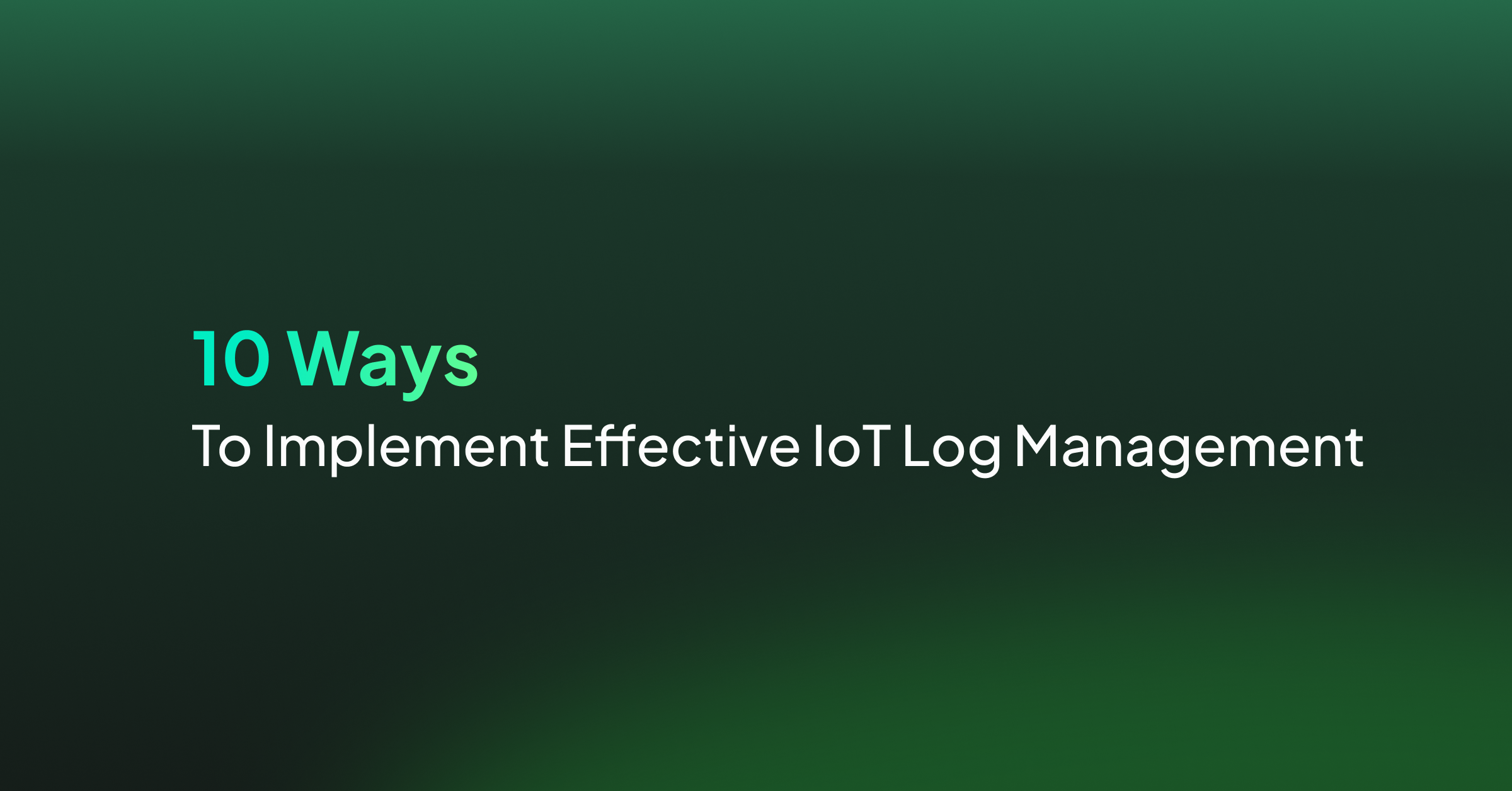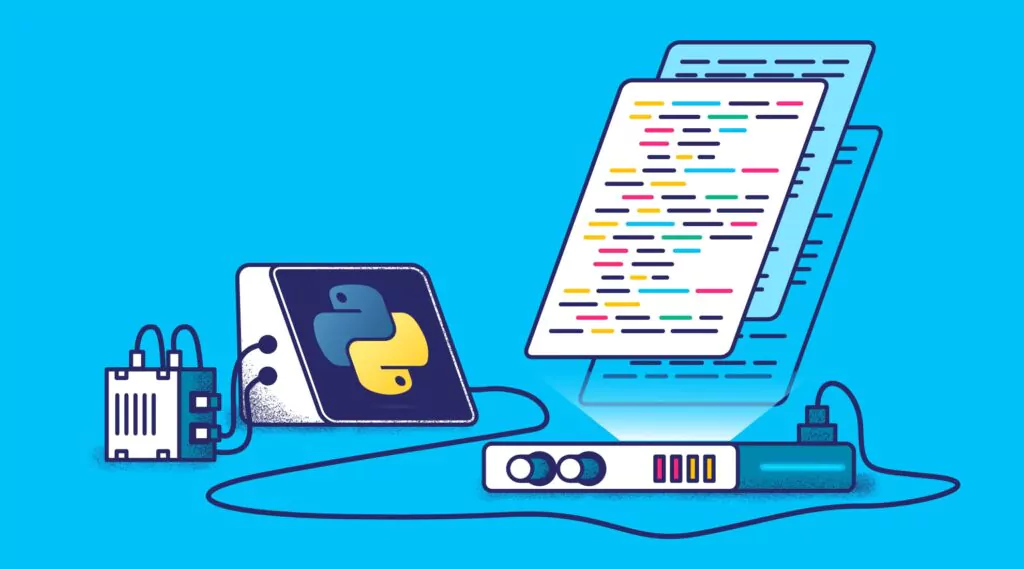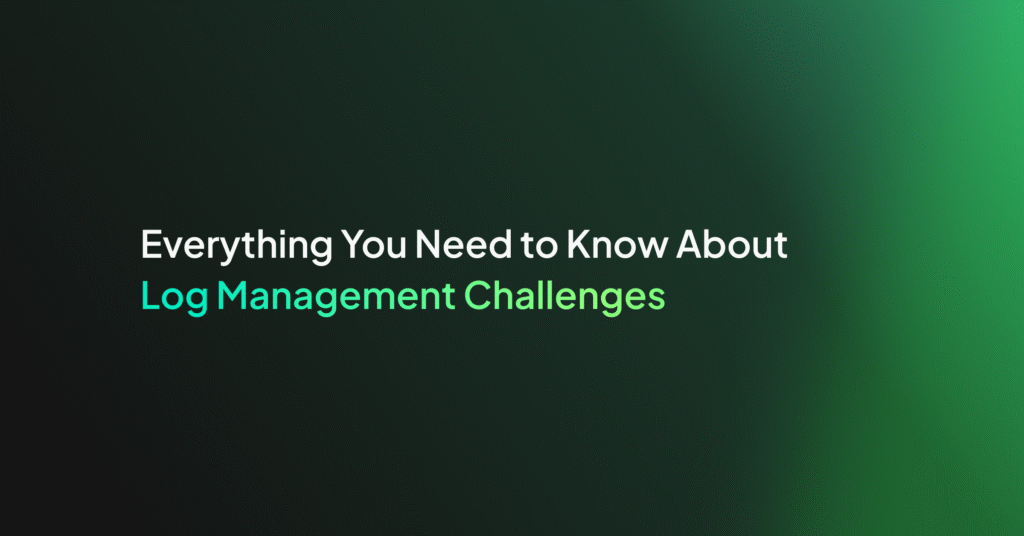10 Ways to Implement Effective IoT Log Management

The Internet of Things (IoT) has quickly become a huge part of how people live, communicate and do business. All kinds of everyday things make up this network – fridges, kettles, light switches – you name it. If it’s connected to WiFi, it’s part of the Internet of Things.
IoT raises significant challenges that could stand in your way of fully realizing its potential benefits. The matter of widespread adoption to a secure, functioning global device network still needs to be addressed. Plus, other concerns related to the hacking of Internet-connected devices and privacy fears have captured public attention.
Many of the challenges related to IoT are wide reaching and may be outside the scope of whatever you’re working on. That said, with effective IoT log management, you’ll be able to manage and troubleshoot these challenges and allow stakeholders to derive insights from data embedded in log events.
Key Challenges Facing IoT and How Your Logs Can Help You Handle Them
Here are some of the key IoT logging challenges along with some potential solutions that you can use to overcome them.
1. Log Management
In general, log management is especially important for IoT applications because of their dynamic, distributed, and fleeting nature. In a short period of time, IoT devices can generate millions of logged events. This in itself is a challenge. You’ll need to ensure that the data captured is accurate, that the common data types are standardized across all logs, and that the logs are protected.
Logs provide value to both troubleshooting and business insights. You can extract interesting metadata for optimization such as improving the onboarding process and making it more secure for connectivity purposes. In order to derive such insights, you’ll need to centralize your logs.
As IoT becomes more and more complex, so does the task of managing it. The goal is to get ahead of problems, and logging lets you do that. Rather than reacting to issues, proactively cut them off and fix them immediately.
IoT Log management has key functions that, if followed, will ensure your logging and monitoring go smoothly. This includes:
- Log aggregation to centralized log storage. This means collectIng only the required logs from the needed source or endpoints and having dedicated servers that does buffering, parsing and enriching
- Log search and analysis. Stored and indexed, your aggregated log files are now searchable
- Log monitoring and alerting. Log management helps keep you on your toes, constantly providing data about how your IoT applications are performing
A log management policy for IoT will provide guidelines as to what types of actions need to be logged in order to trace inappropriate use (privacy), performance issues, and security breaches.
2. Communication Protocols
Message Queuing Telemetry Transport (MQTT) is a very common example of a communication protocol widely used in IoT. A challenge with MQTT is exposed endpoints and the potential deployment of thousands of unsecure MQTT hosts. This results from a lack of secure configurations and the likelihood of misconfigurations in devices that use MQTT.
The use of any communication protocol of this nature has to ensure secure endpoints. Unsecure endpoints can expose records and leak information, some of which can be related to critical sectors, for any casual attacker to see. Then, of course, remains the risk of vulnerabilities that enable denial of service, or worse.
As MQTT does not check the data or payload that they transport, the information they carry can be really anything, posing data validation issues on the connected systems. Organizations should pay adequate attention to IoT security.
As an example, AWS IoT, part of Amazon Web Services (AWS), is essentially a managed MQTT service with strong and enforced security policies. It monitors AWS IoT using CloudWatch Logs to monitor, store, and access your log files. It can send progress events about each message, as it passes from your devices through the message broker and rules engine.
Security teams with the right analytics tools, can use these captured logs for cyber forensic analysis. This can help to understand how to design secure IoT and ensure users do not connect an IoT device in an unsecure way. Otherwise cyber attackers will continue to take advantage of any exposed data that includes personal or potentially company sensitive information.
3. Application of Security in IoT
Each new IoT device provides a potential entry point for hackers to target your IoT network. Rather than allowing any device onto the network, new devices should be “provisioned”. This means you’ll need a robust, predictable process.
Data transmitted over IoT networks is at risk of being intercepted by criminal parties, so organizations should use only secure, password-protected wireless networks to ensure data is encrypted.
To guard against potential threats, organizations should build their networks with the assumption that any device connected to it is ’zero trust network’. Even if someone makes it into your network, they should still need authentication in order to access anything.
4. Connectivity Bottlenecks
The growth of IoT devices has already placed strain on many networks. Without the right ‘edge’ computing framework in place, company networks can become bogged down by latency and sub par bandwidth.
Device connectivity can be unreliable. 4G connections regularly disconnect and reconnect and don’t offer the same stability available to a typical broadband connection. Take a jogger with their smartwatch going out for a run, for example. They’re going from areas with strong connectivity to areas with poor connectivity and back again. Prolonged disconnections can result in the device running out of buffer memory to store its logs.
The biggest part of logging in IoT in these situations, is to understand where to store the generated data. Having a centralized log management system and a requirement that devices are connected to the Internet when they are updating, will ensure greater stability and reduce these types of bottlenecks.
It is important for companies developing IoT technology, to carefully examine their IoT connectivity providers and choose one with a strong record of service and innovation. If you want to take it to the next level, you can intelligently switch between networks, based on their relative strength at any given time.
5. Power Management
With a growing number of IoT devices comes growing power management requirements. Some IoT devices, like kitchen appliances, are located in accessible locations and draw on stable power sources. As we know, this isn’t always the case. Many devices rely solely on a battery for power.
Power consumption is not just a hardware issue. Greedy software can consume more resources than it needs and drain the limited power available to the device.
Power consumption is best captured using device log management and having a centralized location for those logs to be analyzed.
Modern device data capture techniques integrating with cloud platform services, will help with power problems in IoT devices. Techniques captured from hardware-based power measurements, software-based power measurements embedded in devices and power tracking with anomaly detection, improve efficiency in power management requirements. It will ensure the storage, RAM and CPU capacities of IoT devices are more effective and efficient in their use.
The analysis of this data using forensics, security auditing, network tracing, or data analytics, enables the deep dive into power consumption details. This also gives context to historical power consumption.
6. Data Management
IoT networks generate huge amounts of data. Keeping track of all this data is a challenge in and of itself.
Edge computing can help here. Edge computing is an architectural decision to process data at or near the source. This pushes processing overhead down to the client, lowering the burden on some central system to keep track of everything. We do this instinctively in normal software, with fluentbit and fluentd transformations that format logs on the box, before sending them to a log collection server like Elasticsearch.
Edge computing, data governance policies, and metadata management help organizations deal with issues of scalability and agility, security, and usability. This further assists them to decide whether to manage data on the edge or only after sending it to the cloud.
Organizations need to ensure they are collecting the specific data logging they are looking to isolate. They must then find the right software to keep track of this data and analyze it effectively. Whether in a centralized location or processed near the data source, the right storage is needed. Cloud storage is a solution but others options can rely on the local IoT device itself.
7. Device Management
From an organizational perspective, the advent of the IoT has made the range of devices IT needs to administer limitlessly. Devices need to be regularly patched and inspected to ensure they are at the highest possible level of performance and reliability. Remember, in an IoT system, someone can spill a glass of water and fry one of your devices. The hardware matters just as much as the software.
With the introduction of IoT device management software, this enables an onboarding process of device provisioning and provides a capability to monitor usage and performance metrics. The metrics captured locally and stored in a centralized data storage location for analytics purposes.
This software provides secure on-boarding, organizing, monitoring, troubleshooting, and sending of firmware updates ‘over the air’ (OTA). It will assign them to devices and makes connected devices ready for service quickly. Device management software allows you to quickly zone in on one specific device, in a network of thousands.
8. Complexity of Data Captured
A major challenge of capturing IoT data is due to its complex nature. Often, organizations must not only prepare timestamp or geotag data, but combine it with more structured sources. Today an organization must figure out a way to leverage the resources they have in order to prepare the increasingly complex IoT data.
Organizations must equip their teams with data preparation platforms that can handle the volume and complexity of IoT data, as well as understand how this data can and will be joined with other sources across the organization. By adopting intelligent data preparation solutions and integrating them with a centralized logging repository, the universe of IoT and big data no longer overwhelms. This can be provided from IoT cloud services and ensures organizations are only collecting data that is useful for analytics, forensics, and intelligence purposes.
9. Threat of Cyber Attacks
One of the biggest security challenges is the creation of Distributed Destruction of Service (DDoS) attacks that employ swarms of poorly protected IoT devices, to attack public infrastructure through coordinated misuse of communication channels. An example is the use of IoT botnets that can direct enormous swarms of connected sensors, to cause damaging and unpredictable spikes in infrastructure use, leading to things like power surges, destructive water hammer attacks, or reduced availability of critical infrastructure on a wide scale.
A very large percentage of traffic from IoT devices to our honeypots is automated. A honeypot being the computer security mechanism set to detect, deflect, or counteract attempts at unauthorized use of information. This is a dangerous scenario, given that most modern bot armies and malware are scripted to attack at scale.
Centralizing all access logs will allow organizations to maintain all vulnerable devices under their control. The captured logs can be used for cyber forensic work and allows us to connect the dots and find correlations between events that may otherwise look unrelated.
10. Compatibility and Updates
New waves of technology often feature a large stable of competitors jockeying for market share, and IoT is certainly no exception. When it comes to home automation using mesh networking, several competitors have sprung up to challenge Bluetooth’s mesh network offerings. Continued compatibility for IoT devices also depends upon users keeping their devices updated and patched. Unpatched IoT devices present serious security vulnerabilities and increase consumer risk.
Wrap-Up
IoT is one of the most exciting engineering developments of the past decade. It opens up a whole world of new capabilities and tooling, that can bring convenience and support to many consumers. With all of these new features, however, comes risk.
Without focusing on our observability responsibilities, a thousand disparate devices is a maintenance and security nightmare. Check out how Coralogix can make your life easier and consume all of those logs for you, in real-time.




